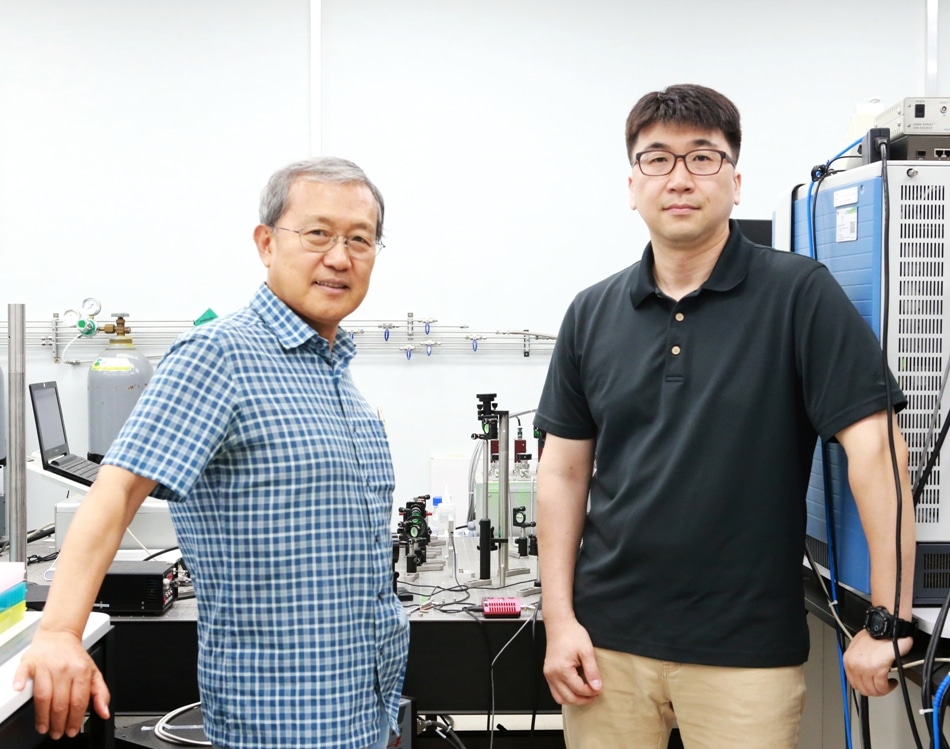Aug 12 2019
A technology that can acquire high-resolution, micrometer-sized images for mass spectrometric examination without the need for sample preparation has been developed. DGIST Research Fellow Jae Young Kim and Chair-professor Dae Won Moon’s team were successful in developing the precise analysis and micrometer-sized imaging of bio-samples using a compact and costly laser.
 Chair-professor Dae Won Moon in the Department of New Biology (left) and Research Fellow Jae Young Kim in the Department of Robotics Engineering (right)
Chair-professor Dae Won Moon in the Department of New Biology (left) and Research Fellow Jae Young Kim in the Department of Robotics Engineering (right)
DGIST stated that Research Fellow Jae Young Kim in the Department of Robotics Engineering and Chair-professor Dae Won Moon’s team created a technology that can examine experiment samples without the need for any preparation steps. Owing to its ability to acquire high-resolution mass spectrometric images without an experimental setting using “continuous wave laser,” the technology is projected to be applied extensively in precision medicine and medical diagnosis fields.
A number of advance preparations are required for the mass spectrometric imaging of biometric samples using “specimen,” which thinly cut an object to examine. The specimen must be altered artificially since they cannot be examined accurately in atmospheric pressure or room temperature. To create a suitable analysis technology and ease the burden, Research Fellow Kim began the study.
The research team set up a lens carrying continuous wave laser immediately below a microscope substrate where the specimen is placed and the laser was aimed at it to measure mass spectra by analyzing molecules from desorption.
The mass spectra can be examined via a continuous wave laser whose energy is weaker than other lasers due to the use of “graphene substrate” underneath the specimen.
Since the honeycomb-patterned graphene has excellent high heat conductivity and can turn light into heat, it can secure sufficient heat required for specimen examination with a small amount of light produced by the continuous wave laser. This technology is also beneficial for attaining high-resolution analysis images, as it can secure space to study specimen much more carefully even when employing a 20x magnifying lens.
Through this technology, we could greatly shorten the preparation time for analysis by omitting the specimen preprocessing step. Our next plan is to develop the technology further so it can be applied in various areas such as medical diagnosis.
Dae Won Moon, Chair-Professor, Department of New Biology, DGIST
This study included research fellow Jae Young Kim in the Department of Robotics Engineering and Ph.D. candidate Heejin Lim in the Department of New Biology as the co-first authors and was conducted with Professor Cheol Song in the Department of Robotics Engineering at DGIST, Professor Dong-Kwon Lim at Korea University, and Research Professor Ji-Won Park at Chungnam National University.
The results have been reported as the cover paper on “ACS Applied Materials & Interfaces,” an international journal in the chemical and nanotechnology field, on July 31st.